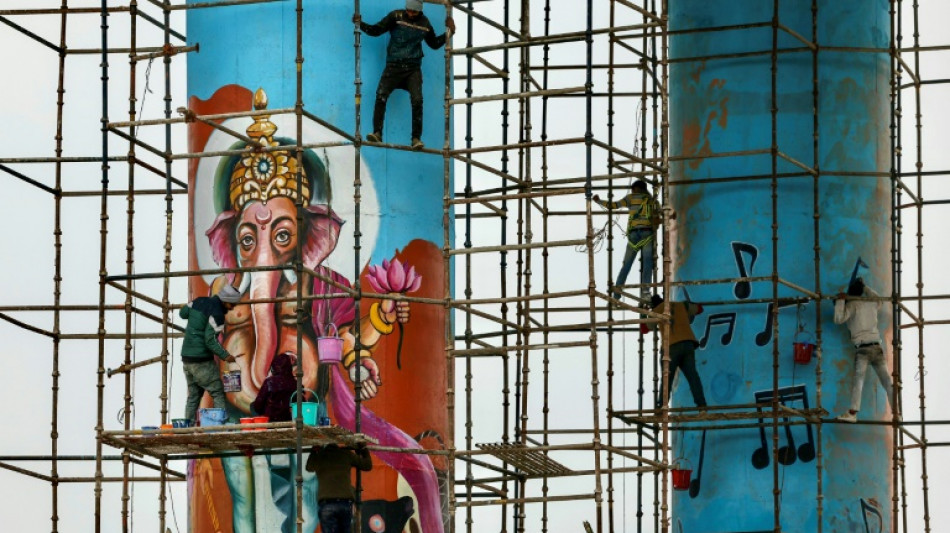
-
 The film that created the Bardot 'sex kitten' myth
The film that created the Bardot 'sex kitten' myth
-
Former England cricket boss Morris dies aged 62

-
 Brigitte Bardot on Muslims, men and 'horrible' humanity
Brigitte Bardot on Muslims, men and 'horrible' humanity
-
Nkunku breaks Serie A goal duck to fire AC Milan top

-
 Hakimi to feature in Morocco's final AFCON group game
Hakimi to feature in Morocco's final AFCON group game
-
Bardot: the screen goddess who gave it all up

-
 Central African Republic president seeks third term in election
Central African Republic president seeks third term in election
-
France's screen siren Brigitte Bardot dies at 91

-
 French 'legend' Brigitte Bardot dead at 91
French 'legend' Brigitte Bardot dead at 91
-
French legend Brigitte Bardot dead at 91: foundation

-
 Zelensky looks to close out Ukraine plan in meeting with Trump
Zelensky looks to close out Ukraine plan in meeting with Trump
-
Multicultural UK town bids to turn page on troubled past

-
 'Unfair election': young voters absent from Myanmar polls
'Unfair election': young voters absent from Myanmar polls
-
Master Lock Comanche wins Sydney-Hobart ocean race for fifth time

-
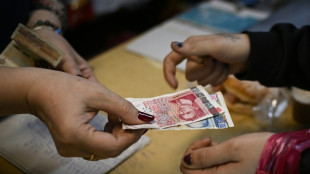 Bulgaria adopts euro amid fear and uncertainty
Bulgaria adopts euro amid fear and uncertainty
-
Giannis triumphant in NBA return as Spurs win streak ends

-
 How company bets on bitcoin can backfire
How company bets on bitcoin can backfire
-
Touadera on path to third presidential term as Central African Republic votes

-
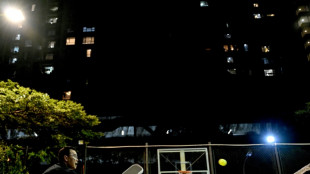 'Acoustic hazard': Noise complaints spark Vietnam pickleball wars
'Acoustic hazard': Noise complaints spark Vietnam pickleball wars
-
Iraqis cover soil with clay to curb sandstorms
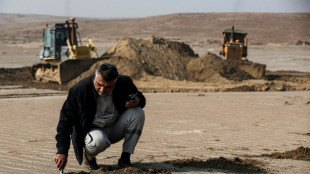
-
 Australia's Head backs struggling opening partner Weatherald
Australia's Head backs struggling opening partner Weatherald
-
'Make emitters responsible': Thailand's clean air activists
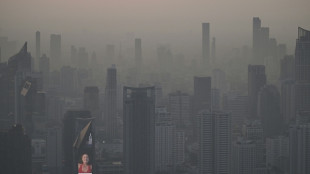
-
 Zelensky looks to close out Ukraine peace deal at Trump meet
Zelensky looks to close out Ukraine peace deal at Trump meet
-
MCG curator in 'state of shock' after Ashes Test carnage

-
 Texans edge Chargers to reach NFL playoffs
Texans edge Chargers to reach NFL playoffs
-
Osimhen and Mane score as Nigeria win to qualify, Senegal draw

-
 Osimhen stars as Nigeria survive Tunisia rally to reach second round
Osimhen stars as Nigeria survive Tunisia rally to reach second round
-
How Myanmar's junta-run vote works, and why it might not
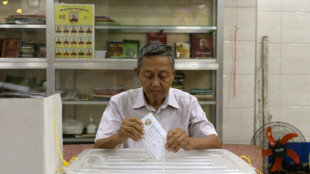
-
 Watkins wants to sicken Arsenal-supporting family
Watkins wants to sicken Arsenal-supporting family
-
Arsenal hold off surging Man City, Villa as Wirtz ends drought

-
 Late penalty miss denies Uganda AFCON win against Tanzania
Late penalty miss denies Uganda AFCON win against Tanzania
-
Watkins stretches Villa's winning streak at Chelsea

-
 Zelensky stops in Canada en route to US as Russia pummels Ukraine
Zelensky stops in Canada en route to US as Russia pummels Ukraine
-
Arteta salutes injury-hit Arsenal's survival spirit

-
 Wirtz scores first Liverpool goal as Anfield remembers Jota
Wirtz scores first Liverpool goal as Anfield remembers Jota
-
Mane rescues AFCON draw for Senegal against DR Congo

-
 Arsenal hold off surging Man City, Wirtz breaks Liverpool duck
Arsenal hold off surging Man City, Wirtz breaks Liverpool duck
-
Arsenal ignore injury woes to retain top spot with win over Brighton

-
 Sealed with a kiss: Guardiola revels in Cherki starring role
Sealed with a kiss: Guardiola revels in Cherki starring role
-
UK launches paid military gap-year scheme amid recruitment struggles

-
 Jota's children join tributes as Liverpool, Wolves pay respects
Jota's children join tributes as Liverpool, Wolves pay respects
-
'Tired' Inoue beats Picasso by unanimous decision to end gruelling year

-
 Thailand and Cambodia declare truce after weeks of clashes
Thailand and Cambodia declare truce after weeks of clashes
-
Netanyahu to meet Trump in US on Monday

-
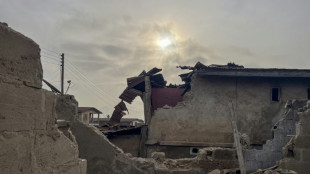 US strikes targeted IS militants, Lakurawa jihadists, Nigeria says
US strikes targeted IS militants, Lakurawa jihadists, Nigeria says
-
Cherki stars in Man City win at Forest

-
 Schwarz records maiden super-G success, Odermatt fourth
Schwarz records maiden super-G success, Odermatt fourth
-
Russia pummels Kyiv ahead of Zelensky's US visit
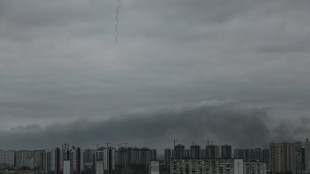
-
 Smith laments lack of runs after first Ashes home Test loss for 15 years
Smith laments lack of runs after first Ashes home Test loss for 15 years
-
Russian barrage on Kyiv kills one, leaves hundreds of thousands without power
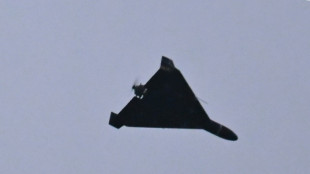

India's Kumbh Mela, world's largest religious gathering
Organisers of India's Kumbh Mela have prepared to host a staggering 400 million devotees at the six-week Hindu festival that starts Monday and is expected to be the largest human gathering in history.
Pilgrims will come from across India and beyond to take part in elaborate rituals, prayers and religious processions with elephants, as well as horse-back parades and chariots.
The mass Hindu mela, or fair, runs from January 13 to February 26 on the river banks of Prayagraj in the northern state of Uttar Pradesh.
Organisers say the scale of preparations for the Kumbh Mela is akin to setting up a country from scratch.
- Mind-boggling numbers -
Around 150,000 toilets have been built along with community kitchens that can each feed up to 50,000 people at a time.
The last celebration at the site, the "ardh" or half Kumbh Mela in 2019, attracted 240 million pilgrims, according to the government.
This year, authorities are preparing for up to 400 million people -- more than the combined population of the United States and Canada.
Mela authorities and police have set up a network of "Lost and Found" centres as well as a special Kumbh phone application to help lost pilgrims reunite with their families.
- Sacred bathing -
The Kumbh Mela, the "festival of the sacred pitcher", is held at the confluence of the Ganges, Yamuna and mythical Sarasvati rivers.
A central part of the rituals is bathing in the holy rivers, with the dawn charge often led by naked, ash-smeared monks.
Hindus believe that those who immerse themselves in the waters cleanse themselves of sin, breaking free from the cycle of rebirth and ultimately attaining salvation.
Many pilgrims embrace a life of simplicity during the festival -- vowing non-violence, celibacy and the offering of alms -- and focusing on prayer and meditation.
- Cosmic battle -
The festival is rooted in Hindu mythology, a battle between deities and demons for control of a pitcher, or kumbh, containing the nectar of immortality.
During the battle, a cosmic fight called "Samudra Manthan", or the "churning of the ocean", four drops of nectar were spilt.
One landed at Prayagraj, where the Kumbh is held every 12 years.
The other drops fell in Nashik, Ujjain and Haridwar, cities where smaller Kumbh festivals are held in intervening years.
The mythological battle is mentioned in the Rig Veda, an ancient sacred canonical Hindu text.
One of the earliest historical mentions of the festival comes from Chinese Buddhist monk and scholar Hiuen Tsang, who attended in the seventh century.
- Key dates -
Bathing takes place every day, but on the most auspicious dates, it is known as Shahi Snan, or "royal bath".
Ceremonies include the visually spectacular "aarti", when vast numbers of priests perform rituals holding flickering lamps.
Devotees also float a sea of twinkling "diya" prayer lamps, crafted from baked flour, that glow from burning mustard oil or clarified butter.
Key dates include January 13, the start of the mela that coincides with the full moon.
One of the most popular days is January 29, Mauni Amavasya, when celestial alignments are said to be ideal for purifying waters.
Celebrations culminate on February 26, Maha Shivaratri, the final holy bathing day.
L.Davis--AMWN


